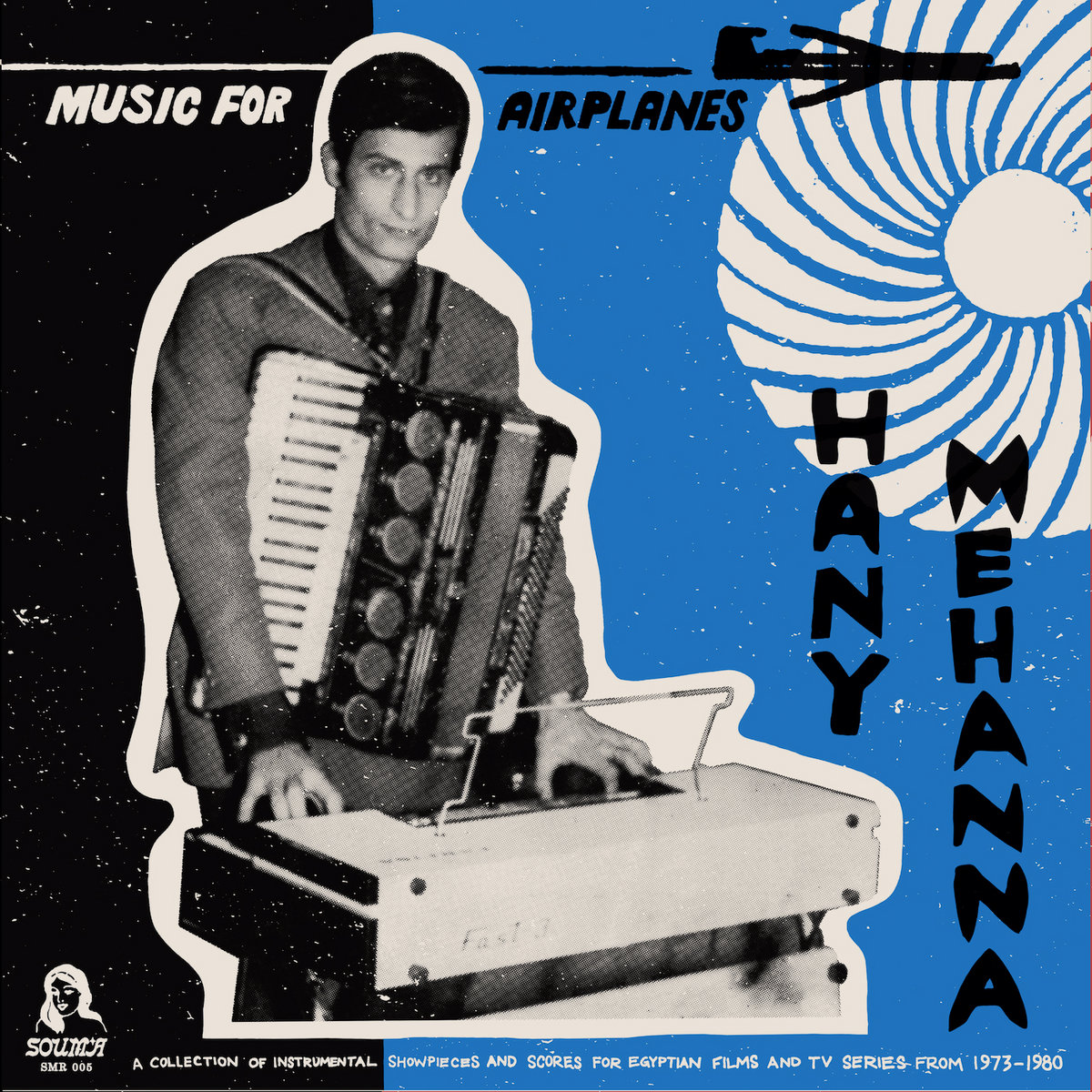 Hany Mehanna is a key figure in the development of keyboards in Asian music. As a young man he played accordion, organ, and synth in the orchestra of legendary singer Umm Kulthum and—along with Ammar Al-Sheriyi—learned to create quarter tones by using oscillators. In a later prolific period composing music for 93 films and 38 television series, Mehanna forged his own distinctive sound: a balance of traditional Arabic melody types or maqams and hypnotic experimental electronics. Remastered from his personal reel-to-reel tapes, this album showcases that balance on 19 otherworldly tracks. I like the fact I can never predict what any piece will sound like based on how it starts, even on very short tracks. Mehanna’s only other solo album, The Miracle Of The Seven Dances, was reissued in 2018 after being rediscovered in a record shop in Casablanca.
Hany Mehanna is a key figure in the development of keyboards in Asian music. As a young man he played accordion, organ, and synth in the orchestra of legendary singer Umm Kulthum and—along with Ammar Al-Sheriyi—learned to create quarter tones by using oscillators. In a later prolific period composing music for 93 films and 38 television series, Mehanna forged his own distinctive sound: a balance of traditional Arabic melody types or maqams and hypnotic experimental electronics. Remastered from his personal reel-to-reel tapes, this album showcases that balance on 19 otherworldly tracks. I like the fact I can never predict what any piece will sound like based on how it starts, even on very short tracks. Mehanna’s only other solo album, The Miracle Of The Seven Dances, was reissued in 2018 after being rediscovered in a record shop in Casablanca.
Souma
The album kicks off with “Hanady” blipping along like a wheezing, psychedelic, video game belly dance augmented by electric violin and the guitar of Omar Khorshid. On this track, and on the entire album, nothing is allowed to limp along into over-repetiive normality or to descend into an indecipherable mess. "Haya Ha’ira” is more raw, blasting into being with a razor blade guitar-like slashes and dazzling percussion and it’s over too soon. Bizarrely, the precisely chopped rhythm of "Walad Wa Bint” is virtually a compete blueprint for the verse singing on the early Stiff Records 45 “(I Don’t Want To Go To) Chelsea.”
“Rhela” has the kind of galloping rhythm and lustrous twang often associated with doomed British producer Joe Meek, as Mehanna throws hypnotic organ phrases over a frenzied beat. His breathtaking ability to layer electronics, strings, and solo instruments is evident on the library robo-funk of "Less Al Thulata” and the spaced out "Al Qina’ Al Za’ef” with (I think) twinkling synth, a lonely horn, smooth strings, and what sound like wah wah imitation vocals. There are actual vocals on "Dal Al Omr Ya Waladi,” an impressive dusky moaning which is a good counterpoint to the intriguing reedlike instrument which shares carrying the melody. Again, the mix is fabulous and the atmosphere beautifully relaxed.
On the cover Hany Mehanna almost looks like one of the heroic resistance fighters from Gillo Pontecorvo's documentary The Battle of Algiers, except—rather than a machine gun—he’s got an accordion strapped over his shoulder and stands in front of a small Farsifa organ. It is worth remembering that Farfisa organs have been used by everyone from Reich and Glass to Suicide and Cabaret Voltaire, as well as Giorgio Moroder, Pink Floyd, Sly Stone, Miles Davis, Percy Sledge, XTC, Sam The Sham, K.Frimpong, and Stereolab. Back on this album sleeve, Mehanna looks for all the world like he is sending a message on an early 1990s fax machine. In the top right a plane heads East across a circular object which might be a representation of the sun, or a piece of exotic garb I don’t recognize. The image is reminiscent of the cover from the cassette release Relaxation Tape For Solo Space Travel by The National Pool, the concept of which purports to be an actual aid for would-be cosmonauts. Music For Airports stays within the earth’s atmosphere but it definitely travels to some subtle and glamorous places. The album fell between the cracks a little with its December 2021 release date.
I haven’t had time to research the films and TV shows for each track, but the imagination may quickly run to mustachioed detectives, flared trousers, glamorous girls fallen in with a bad crowd, cool cars, cocktails, speedboats, nightclubs, ill-gotten gains, spies, shortwave radio, fistfights, heat and dust, baba ganoush, gloriously melodramatic day time soaps, switchblades, Sid James, cigarette holders, white dinner jackets, and all that jazz. The album title makes sense in the context of the modernizing of Egyptian economy in the 1970s, with a jet-set, Operation Nimbus Moon, and President Sadat standing on a destroyer when reopening the Suez Canal. Hany Mehanna's tunes fit in with any concept of freedom, and his rhythms showed up in popular songs which soundtracked the Arab Spring of 2010-12. This collection ends on a real high with the thrilling and poignant "Damat Alam" sandwiched between the Opening and End themes to “Al Dawarma.” No need to round up the usual suspects such as Basil Kirchin or eden ahbez. I think this is the beginning of a beautiful friendship.
listen here
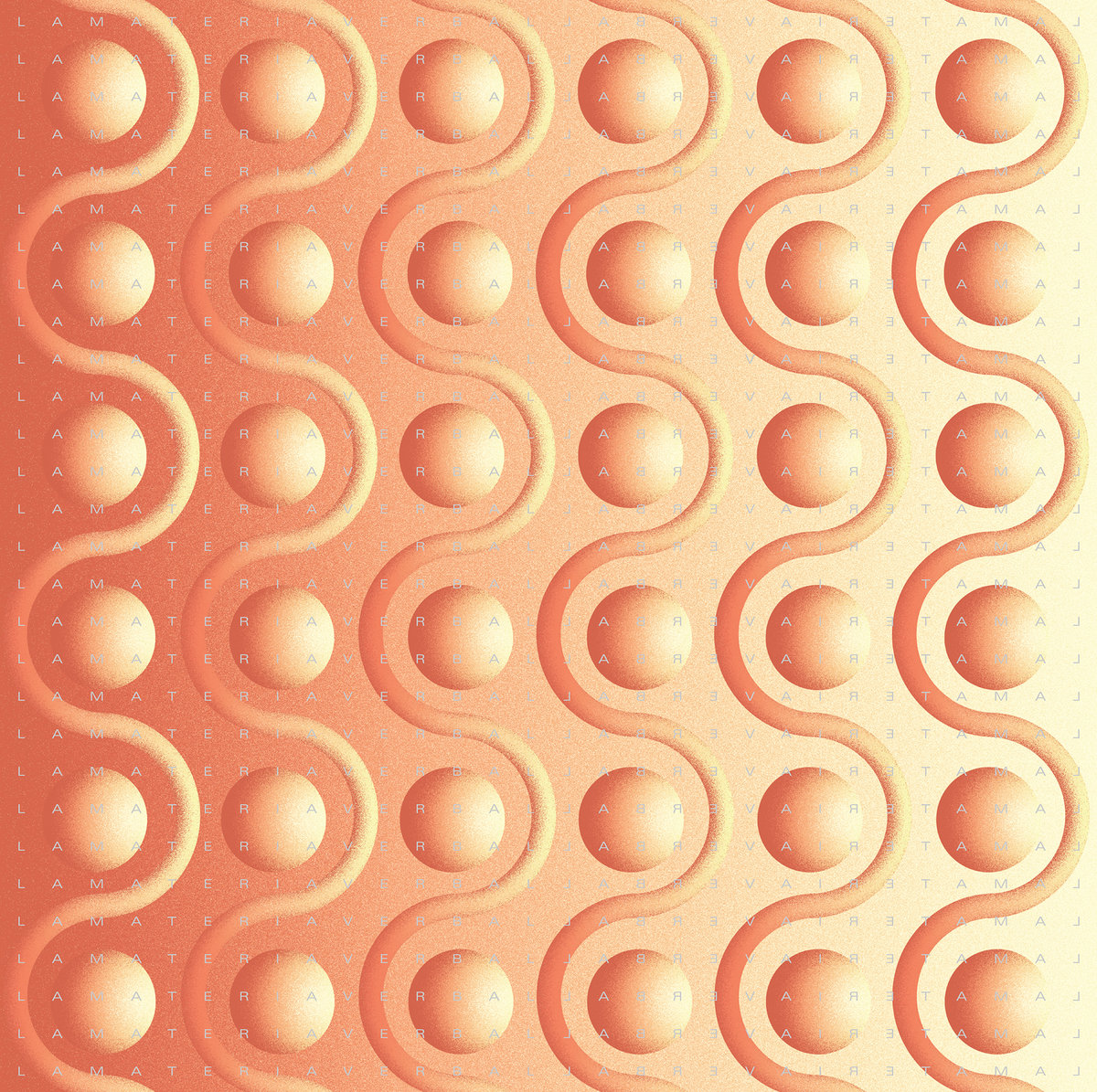 Here is a stunning history of Peruvian sound poems from 1972-2021. The album concentrates on material which has been recorded and edited, and yet showcases the compositional technique and sound organization across the spectrum of the discipline. It's an important and refreshing collection of 22 inherently absurd musical pieces, accompanied by seriously good liner notes.
Here is a stunning history of Peruvian sound poems from 1972-2021. The album concentrates on material which has been recorded and edited, and yet showcases the compositional technique and sound organization across the spectrum of the discipline. It's an important and refreshing collection of 22 inherently absurd musical pieces, accompanied by seriously good liner notes.

 The wordless devotional singing and giddy organ accompaniment of Delphine Dora's Hymnes Apophatiques led me to explore the Morc catalog. Therein I developed an audio crush on Bingo Trappers (who were composing an ode to Mimi Parker a decade ago), discovered Lowered's heartbreaking Music For Empty Rooms, arrived better late than never to an appreciation of the drone folk of both Pifkin and Roxane Métayer, but firstly dived into the sweetly sinister debut album from Luster.
The wordless devotional singing and giddy organ accompaniment of Delphine Dora's Hymnes Apophatiques led me to explore the Morc catalog. Therein I developed an audio crush on Bingo Trappers (who were composing an ode to Mimi Parker a decade ago), discovered Lowered's heartbreaking Music For Empty Rooms, arrived better late than never to an appreciation of the drone folk of both Pifkin and Roxane Métayer, but firstly dived into the sweetly sinister debut album from Luster. This is the second offering from Wormhook, and it is a fine blend of cathartic inner voices with something akin to ancient incantations from the great beyond, augmented, but not swamped, by hand-chamfered electronics and fragile guitar. Umpteen lyrical references to clouds, nature, stones, rain, and heaven, cannot obscure that Wormhook's radical psalmody is far from the tangled common or garden variety of free folk hedgerow bustle, approaching instead the trance-state wisdom of a delirious time-traveling street corner prophet deciphering Sumerian inscriptions to an audience of none.
This is the second offering from Wormhook, and it is a fine blend of cathartic inner voices with something akin to ancient incantations from the great beyond, augmented, but not swamped, by hand-chamfered electronics and fragile guitar. Umpteen lyrical references to clouds, nature, stones, rain, and heaven, cannot obscure that Wormhook's radical psalmody is far from the tangled common or garden variety of free folk hedgerow bustle, approaching instead the trance-state wisdom of a delirious time-traveling street corner prophet deciphering Sumerian inscriptions to an audience of none. Although initially premiered on Bandcamp in 2021, Eiko Ishibashi's ode to Jack McCoy—Sam Waterston's character from the television show Law & Order—was remixed by Jim O'Rourke and issued on vinyl in 2022. It is a dazzling album of crisp ambient tones, colored with aching jazz and minimalist drone, wherein Ishibashi creates dense, mysterious, but also light and dreamy atmospheres. Such a fine balance is perhaps to be expected from a composer and multi-instrumentalist who grew up banned from listening to pop radio, has worked with avantgarde giants such as Merzbow, made an album about her family's role in Japan's sins in Manchuria, yet also takes inspiration from Genesis's prog anthem "Supper's Ready," scored anime, had an Oscar-nominated soundtrack (for Drive My Car), loves Columbo, and watches Law & Order.
Although initially premiered on Bandcamp in 2021, Eiko Ishibashi's ode to Jack McCoy—Sam Waterston's character from the television show Law & Order—was remixed by Jim O'Rourke and issued on vinyl in 2022. It is a dazzling album of crisp ambient tones, colored with aching jazz and minimalist drone, wherein Ishibashi creates dense, mysterious, but also light and dreamy atmospheres. Such a fine balance is perhaps to be expected from a composer and multi-instrumentalist who grew up banned from listening to pop radio, has worked with avantgarde giants such as Merzbow, made an album about her family's role in Japan's sins in Manchuria, yet also takes inspiration from Genesis's prog anthem "Supper's Ready," scored anime, had an Oscar-nominated soundtrack (for Drive My Car), loves Columbo, and watches Law & Order.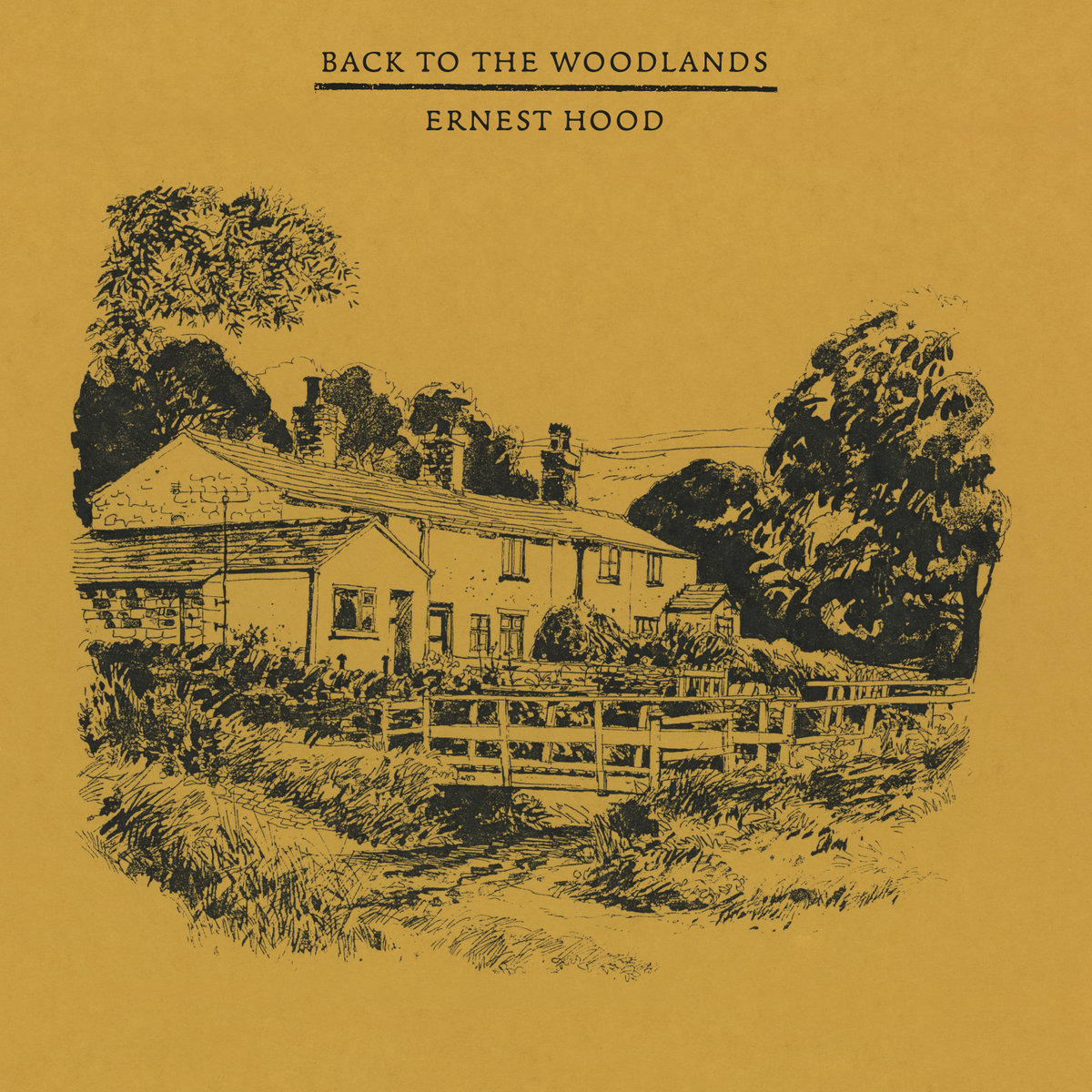 Ernest Hood is best known for the 1975 release Neighborhoods, a unique album of locations recorded during his travels through Oregon combined later with his zither and synthesizer music. It is far more common now but Hood was a pioneer in the use of "found sound." Back To The Woodlands harks from the same (1972-1982) period but has never been released until now. It is a fine addition to Hood's legacy of work which is reflective, warm, and inviting, without being easy, silly, or overly sentimental.
Ernest Hood is best known for the 1975 release Neighborhoods, a unique album of locations recorded during his travels through Oregon combined later with his zither and synthesizer music. It is far more common now but Hood was a pioneer in the use of "found sound." Back To The Woodlands harks from the same (1972-1982) period but has never been released until now. It is a fine addition to Hood's legacy of work which is reflective, warm, and inviting, without being easy, silly, or overly sentimental.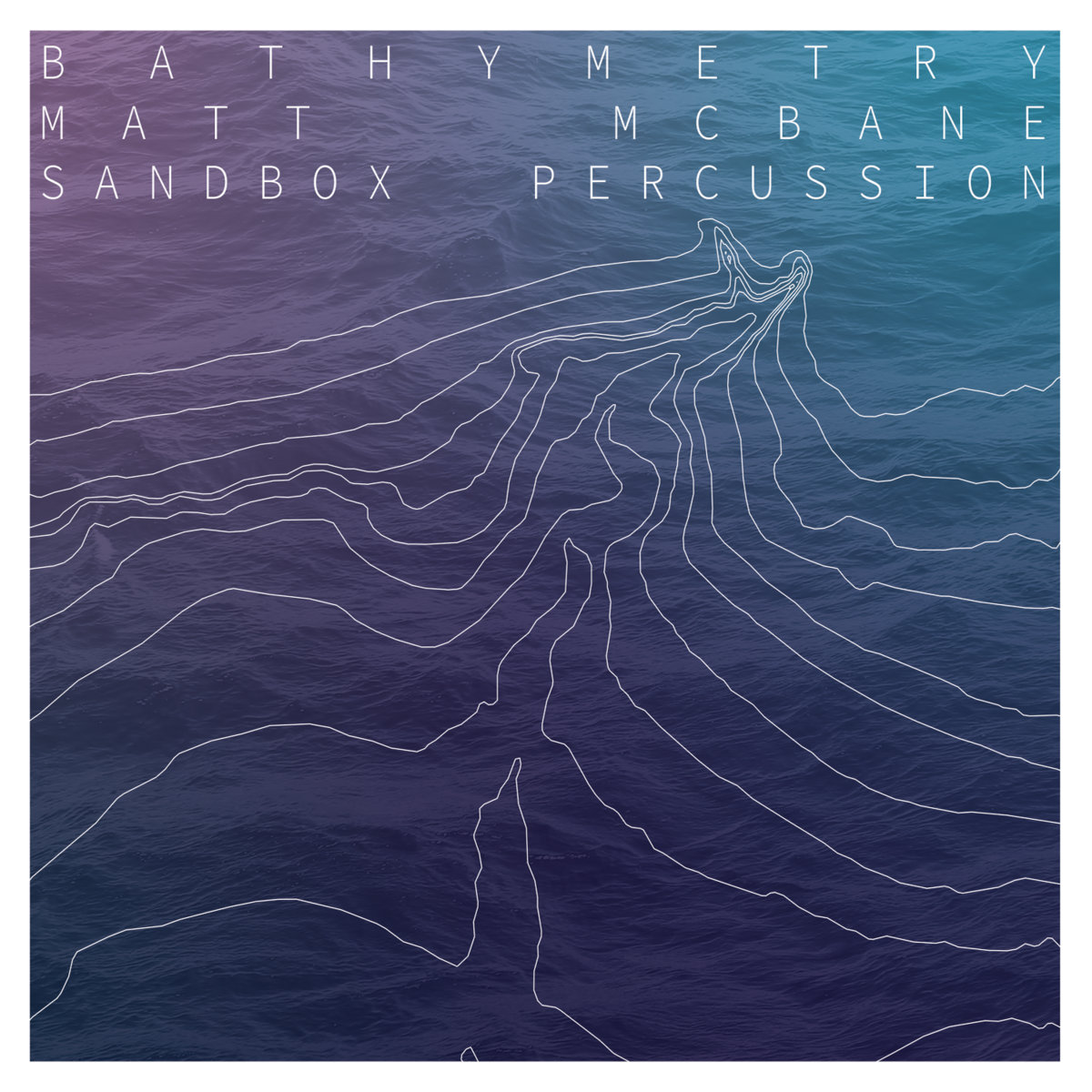 As a teenage surfer Matt McBane became obsessed with the sea and the way in which the bathymetry of the ocean floor affects the way that waves break. His composition Bathymetry mirrors that relationship, with his bass synthesizer providing the platform to shape the more trebly waves of varied percussion played by Sandbox Percussion (a well-named and playful ensemble). On the surface, this album is slightly out of my, rather idiosyncratic, comfort zone. The accompanying videos were off-putting and (politeness dictates that I cannot write what I would cheerfully do with them) ping-pong balls overused. Despite this, my listening curiosity was piqued and held steady. Then halfway through the 40 minute duration, the track "Groundswell" completely won me over, and I rode a wave of enjoyment all the way to the end. Later on, afer repeated listens, it occurred to me that the same process happens on each track, as bursts of percussive grit, pops and scrapes away, to eventually leave the rewarding pearl.
As a teenage surfer Matt McBane became obsessed with the sea and the way in which the bathymetry of the ocean floor affects the way that waves break. His composition Bathymetry mirrors that relationship, with his bass synthesizer providing the platform to shape the more trebly waves of varied percussion played by Sandbox Percussion (a well-named and playful ensemble). On the surface, this album is slightly out of my, rather idiosyncratic, comfort zone. The accompanying videos were off-putting and (politeness dictates that I cannot write what I would cheerfully do with them) ping-pong balls overused. Despite this, my listening curiosity was piqued and held steady. Then halfway through the 40 minute duration, the track "Groundswell" completely won me over, and I rode a wave of enjoyment all the way to the end. Later on, afer repeated listens, it occurred to me that the same process happens on each track, as bursts of percussive grit, pops and scrapes away, to eventually leave the rewarding pearl. Dave Clarkson is a gem who has flown under my—far from infallible—radar for about 30 years. There are upwards of 40 releases emanating in his impressive catalog, from the Cavendish House studio, including many of these Guides which have focused on everything from beaches, caves, forests, and lighthouses, with tangents to rain, ghost stories and illness. That another of his albums, For Horselover Fat by Eye In The Sky has a bash at honoring the concerns and creativity of the astonishing Philip K. Dick is right up my alley.
Dave Clarkson is a gem who has flown under my—far from infallible—radar for about 30 years. There are upwards of 40 releases emanating in his impressive catalog, from the Cavendish House studio, including many of these Guides which have focused on everything from beaches, caves, forests, and lighthouses, with tangents to rain, ghost stories and illness. That another of his albums, For Horselover Fat by Eye In The Sky has a bash at honoring the concerns and creativity of the astonishing Philip K. Dick is right up my alley. This is Mikko Singh's best and most consistent record yet as Haleiwa. Both his first full length releases Pura Vida dude and Palm Trees Of The Subarctic were light and dreamy, while his third Cloud Formations accelerated Haleiwa onto another level, driven by good tunes and several great moments, not least the plunge through synthesizers into warm bass driven melody on the opener "HKI-97," and the digital blips of "Foggy" which (perhaps unconsciously) resembles Brian Wilson frantically transposing part of "California Girls" into morse code. That third record heralded a deeper sound, perhaps because Singh switched to analog cassette and reel-to-reel tape recording, and it also included more variety although for no clear reason. Hallway Waverider avoids that pitfall by finding a sweet spot and then showing little or no desire to move very far away.
This is Mikko Singh's best and most consistent record yet as Haleiwa. Both his first full length releases Pura Vida dude and Palm Trees Of The Subarctic were light and dreamy, while his third Cloud Formations accelerated Haleiwa onto another level, driven by good tunes and several great moments, not least the plunge through synthesizers into warm bass driven melody on the opener "HKI-97," and the digital blips of "Foggy" which (perhaps unconsciously) resembles Brian Wilson frantically transposing part of "California Girls" into morse code. That third record heralded a deeper sound, perhaps because Singh switched to analog cassette and reel-to-reel tape recording, and it also included more variety although for no clear reason. Hallway Waverider avoids that pitfall by finding a sweet spot and then showing little or no desire to move very far away. I only recently heard Laura Cannell’s fabulous album The Earth With Her Crowns from 2020 and could easily spend 500 words praising its dazzling allure and stark—yet comforting—beauty. Time marches on, though, and since she already has two new releases in 2022 I am focusing on the present year. Both are excellent but, of the two, I am most immediately impressed by Antiphony, wherein Cannell uses alto, bass, and tenor recorders to riff on the birdsong of rural Suffolk , where she lives, which called to her amid the quietness of lockdown. It is riveting and a work that I am unlikely to set aside any time soon.
I only recently heard Laura Cannell’s fabulous album The Earth With Her Crowns from 2020 and could easily spend 500 words praising its dazzling allure and stark—yet comforting—beauty. Time marches on, though, and since she already has two new releases in 2022 I am focusing on the present year. Both are excellent but, of the two, I am most immediately impressed by Antiphony, wherein Cannell uses alto, bass, and tenor recorders to riff on the birdsong of rural Suffolk , where she lives, which called to her amid the quietness of lockdown. It is riveting and a work that I am unlikely to set aside any time soon.  John McGuire has an impressive background in the study and evolution of electronic music: not least his time with Stockhausen at Darmstadt summer schools and subsequent commissions for German radio. Pulse Music is a unique and lively collection (1975-79) that skates across similar post-minimalist terrain as Reich and Riley and kills any lingering debate about the merits of serialism. McGuire created pulse layers in the studios of WDR and the University of Cologne, which to this day possess astounding clarity and separation, allied to marvelous tempo changes.
John McGuire has an impressive background in the study and evolution of electronic music: not least his time with Stockhausen at Darmstadt summer schools and subsequent commissions for German radio. Pulse Music is a unique and lively collection (1975-79) that skates across similar post-minimalist terrain as Reich and Riley and kills any lingering debate about the merits of serialism. McGuire created pulse layers in the studios of WDR and the University of Cologne, which to this day possess astounding clarity and separation, allied to marvelous tempo changes.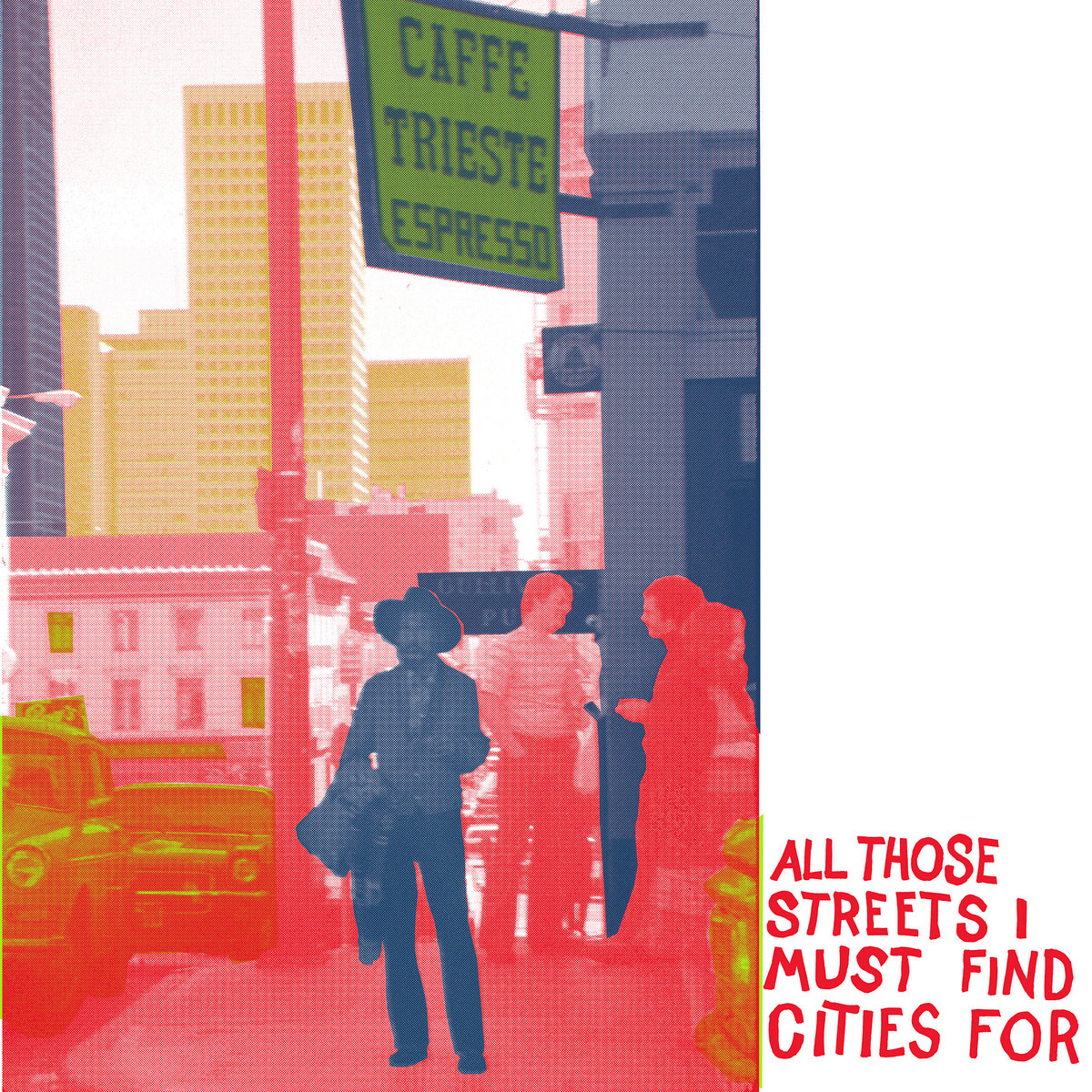 Originally a musical radio play, these twelve tracks excavate and spotlight the life and work of original Beat poet Bob Kaufman; and with Kaufman the life and the work are genuinely inseparable. A mentor to Kerouac, and dubbed the Black American Rimbaud, Kaufman endured savage SFPD brutality, electroshock treatment, and incarceration, before his young and obscure death in abject poverty. Kaufman had purposefully stilled his own voice with a vow of silence stretching from the JFK assassination until the end of the Vietnam War, yet here it still resounds with the speed and spirit of surrealist jazz, forever “lost in a dream world, where time is told with a beat.”
Originally a musical radio play, these twelve tracks excavate and spotlight the life and work of original Beat poet Bob Kaufman; and with Kaufman the life and the work are genuinely inseparable. A mentor to Kerouac, and dubbed the Black American Rimbaud, Kaufman endured savage SFPD brutality, electroshock treatment, and incarceration, before his young and obscure death in abject poverty. Kaufman had purposefully stilled his own voice with a vow of silence stretching from the JFK assassination until the end of the Vietnam War, yet here it still resounds with the speed and spirit of surrealist jazz, forever “lost in a dream world, where time is told with a beat.” An ear-opening collection of radio broadcasts, live performance recordings, and sketched works in progress from a prolific period in the life of this highly distinctive American composer. In the 1950s, Hovhaness was composing around 12 major works a year, in addition to extensive traveling for research and teaching. He may well have suffered from hypergraphia - an overwhelming urge to be constantly creating - and it is a wonder he found time to be married six times.
An ear-opening collection of radio broadcasts, live performance recordings, and sketched works in progress from a prolific period in the life of this highly distinctive American composer. In the 1950s, Hovhaness was composing around 12 major works a year, in addition to extensive traveling for research and teaching. He may well have suffered from hypergraphia - an overwhelming urge to be constantly creating - and it is a wonder he found time to be married six times. Hany Mehanna is a key figure in the development of keyboards in Asian music. As a young man he played accordion, organ, and synth in the orchestra of legendary singer Umm Kulthum and—along with Ammar Al-Sheriyi—learned to create quarter tones by using oscillators. In a later prolific period composing music for 93 films and 38 television series, Mehanna forged his own distinctive sound: a balance of traditional Arabic melody types or maqams and hypnotic experimental electronics. Remastered from his personal reel-to-reel tapes, this album showcases that balance on 19 otherworldly tracks. I like the fact I can never predict what any piece will sound like based on how it starts, even on very short tracks. Mehanna’s only other solo album, The Miracle Of The Seven Dances, was reissued in 2018 after being rediscovered in a record shop in Casablanca.
Hany Mehanna is a key figure in the development of keyboards in Asian music. As a young man he played accordion, organ, and synth in the orchestra of legendary singer Umm Kulthum and—along with Ammar Al-Sheriyi—learned to create quarter tones by using oscillators. In a later prolific period composing music for 93 films and 38 television series, Mehanna forged his own distinctive sound: a balance of traditional Arabic melody types or maqams and hypnotic experimental electronics. Remastered from his personal reel-to-reel tapes, this album showcases that balance on 19 otherworldly tracks. I like the fact I can never predict what any piece will sound like based on how it starts, even on very short tracks. Mehanna’s only other solo album, The Miracle Of The Seven Dances, was reissued in 2018 after being rediscovered in a record shop in Casablanca.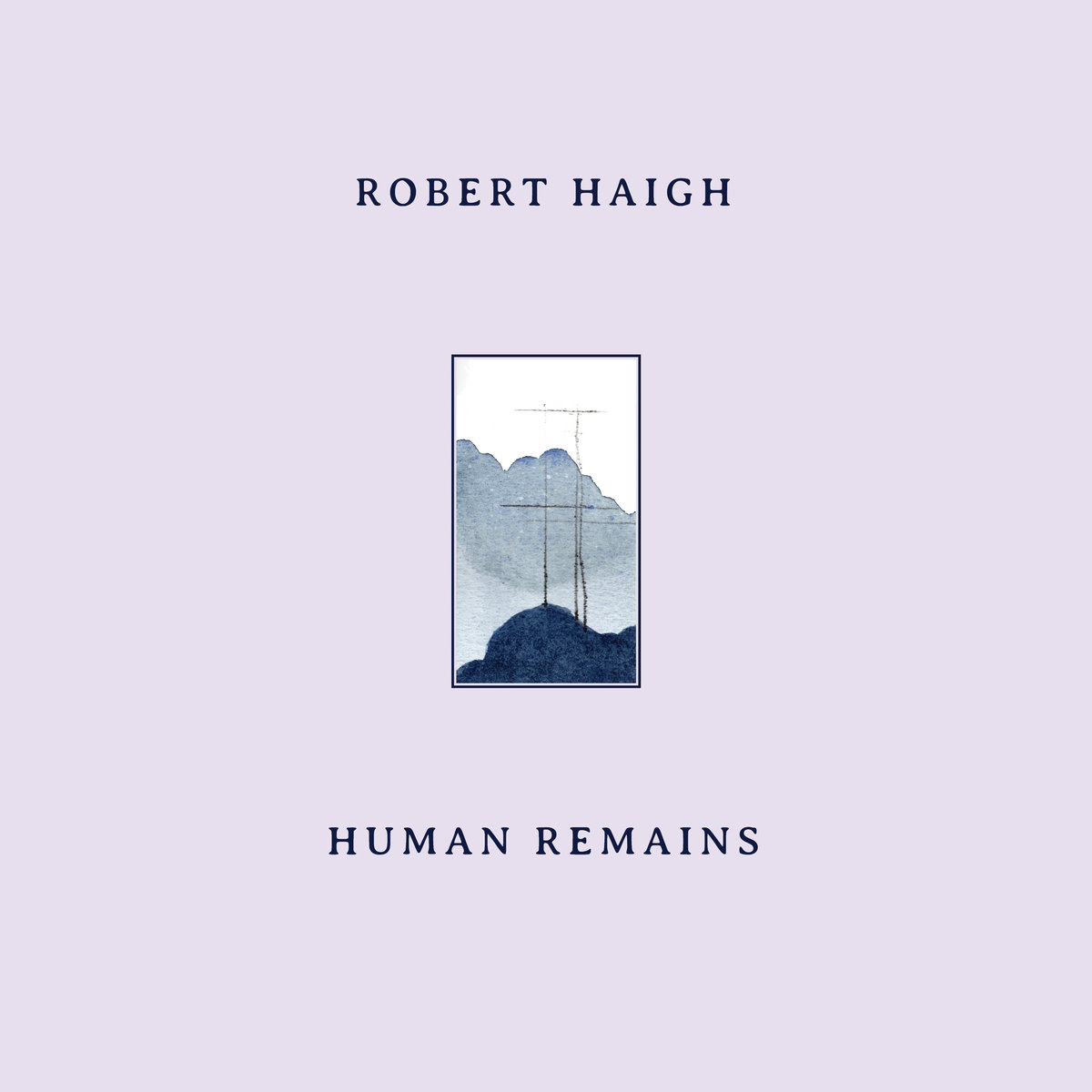 With apologies to Laurie Speigel after whose album the label takes its name (and Sylvia Tarozzi), it must be said that solo piano is at the core of Unseen Worlds. Their standards are high, as evidenced by recent releases such as James Rushford's Musicá Collada/See The Welter and "Blue" Gene Tyranny’s Detours. Human Remains is Robert Haigh’s third (and best) release for the label. His composition and playing superbly balance immediacy and detachment. This balance places a subtle disguise or mystery over these compositions. I detect a similarity with the approach of Werner Herzog in many of whose films the audience is allowed to feel and react without heavy-handed close ups.
With apologies to Laurie Speigel after whose album the label takes its name (and Sylvia Tarozzi), it must be said that solo piano is at the core of Unseen Worlds. Their standards are high, as evidenced by recent releases such as James Rushford's Musicá Collada/See The Welter and "Blue" Gene Tyranny’s Detours. Human Remains is Robert Haigh’s third (and best) release for the label. His composition and playing superbly balance immediacy and detachment. This balance places a subtle disguise or mystery over these compositions. I detect a similarity with the approach of Werner Herzog in many of whose films the audience is allowed to feel and react without heavy-handed close ups.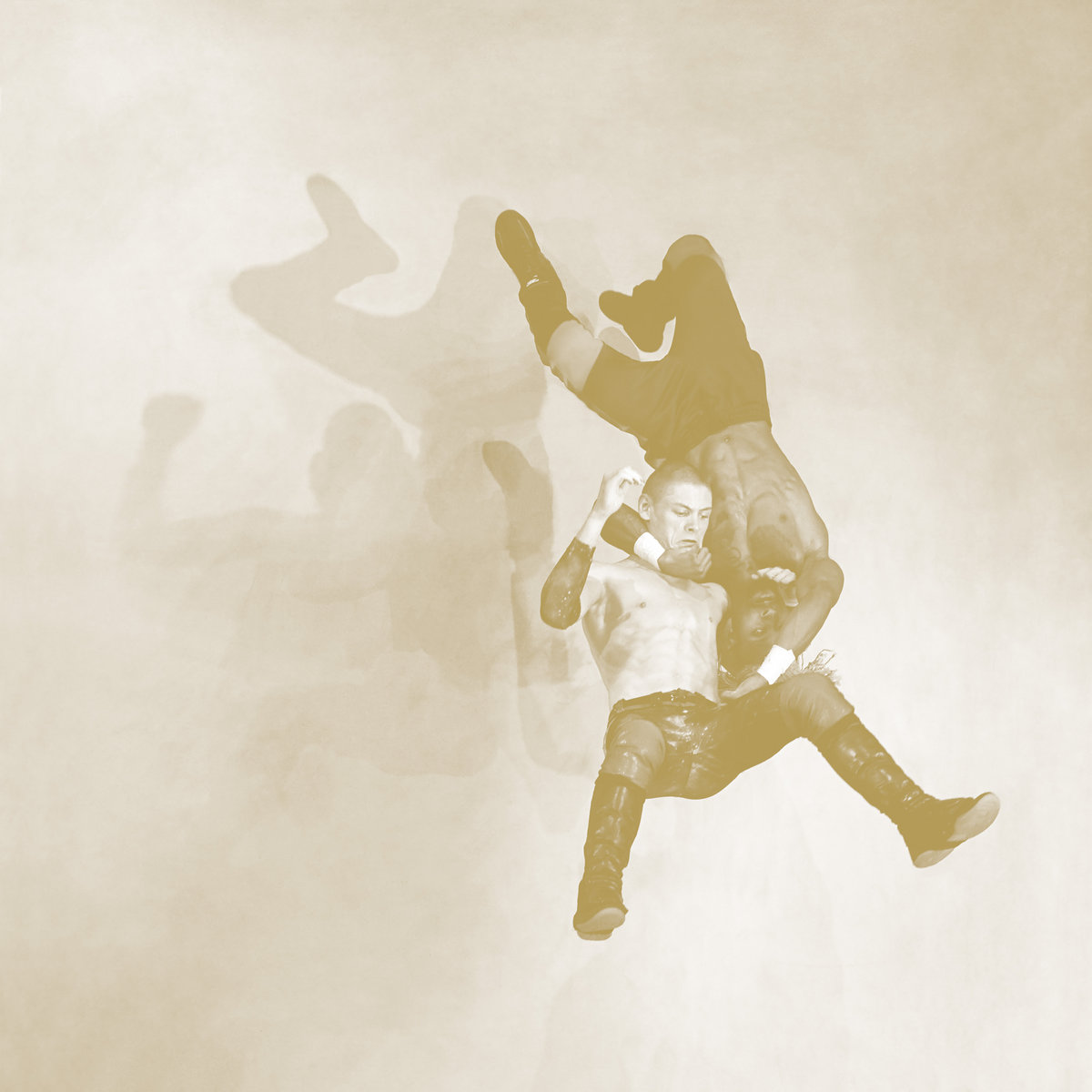 I don’t know exactly what synth-like equipment Robert Takahashi Crouch uses to generate these sounds and maneuver them into place, but these three pieces are very impressive. This is an album of abstract music and it is useful for reference to have detailed context of Crouch's personal challenges and struggle as outsider, victim, self-destructor, or whatever. I read those between my first and second listens to Jubilee and it definitely helped.
I don’t know exactly what synth-like equipment Robert Takahashi Crouch uses to generate these sounds and maneuver them into place, but these three pieces are very impressive. This is an album of abstract music and it is useful for reference to have detailed context of Crouch's personal challenges and struggle as outsider, victim, self-destructor, or whatever. I read those between my first and second listens to Jubilee and it definitely helped.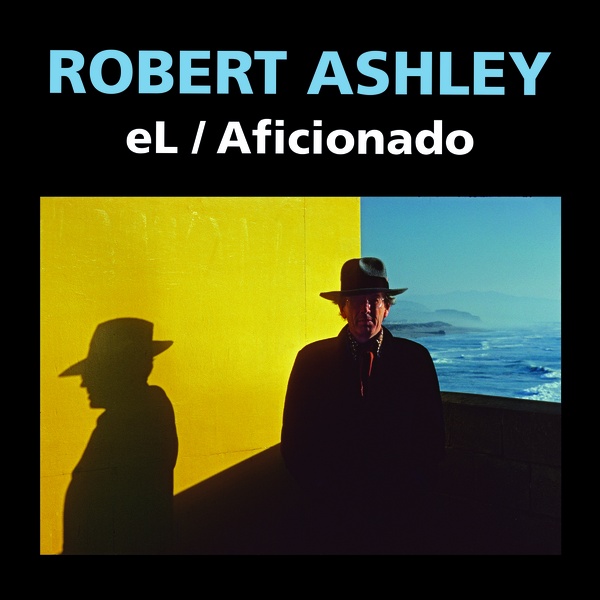 Robert Ashley’s enigmatic opera of interrogation was frequently performed between 1987 and 1993, and a previous recording was released on Lovely Music in 1994. The cast of a 2021 production in Roulette, Brooklyn, are featured on this new rendition, with Kayleigh Butcher, as The Agent, and Brian McCorkle, Bonnie Lander, Paul Pinto as Interrogators #1, 2, and 3. Above and beyond Ashley’s melodies, each participant singer is assigned their own distinct pitch around which they improvise vocal inflections to portray intent and meaning. eL/Aficionado displays the compelling depth of Ashley’s dazzlingly creativity, which is somewhere on a line leading from Edward Hopper and Samuel Beckett to Laurie Anderson and Len Jenkin.
Robert Ashley’s enigmatic opera of interrogation was frequently performed between 1987 and 1993, and a previous recording was released on Lovely Music in 1994. The cast of a 2021 production in Roulette, Brooklyn, are featured on this new rendition, with Kayleigh Butcher, as The Agent, and Brian McCorkle, Bonnie Lander, Paul Pinto as Interrogators #1, 2, and 3. Above and beyond Ashley’s melodies, each participant singer is assigned their own distinct pitch around which they improvise vocal inflections to portray intent and meaning. eL/Aficionado displays the compelling depth of Ashley’s dazzlingly creativity, which is somewhere on a line leading from Edward Hopper and Samuel Beckett to Laurie Anderson and Len Jenkin.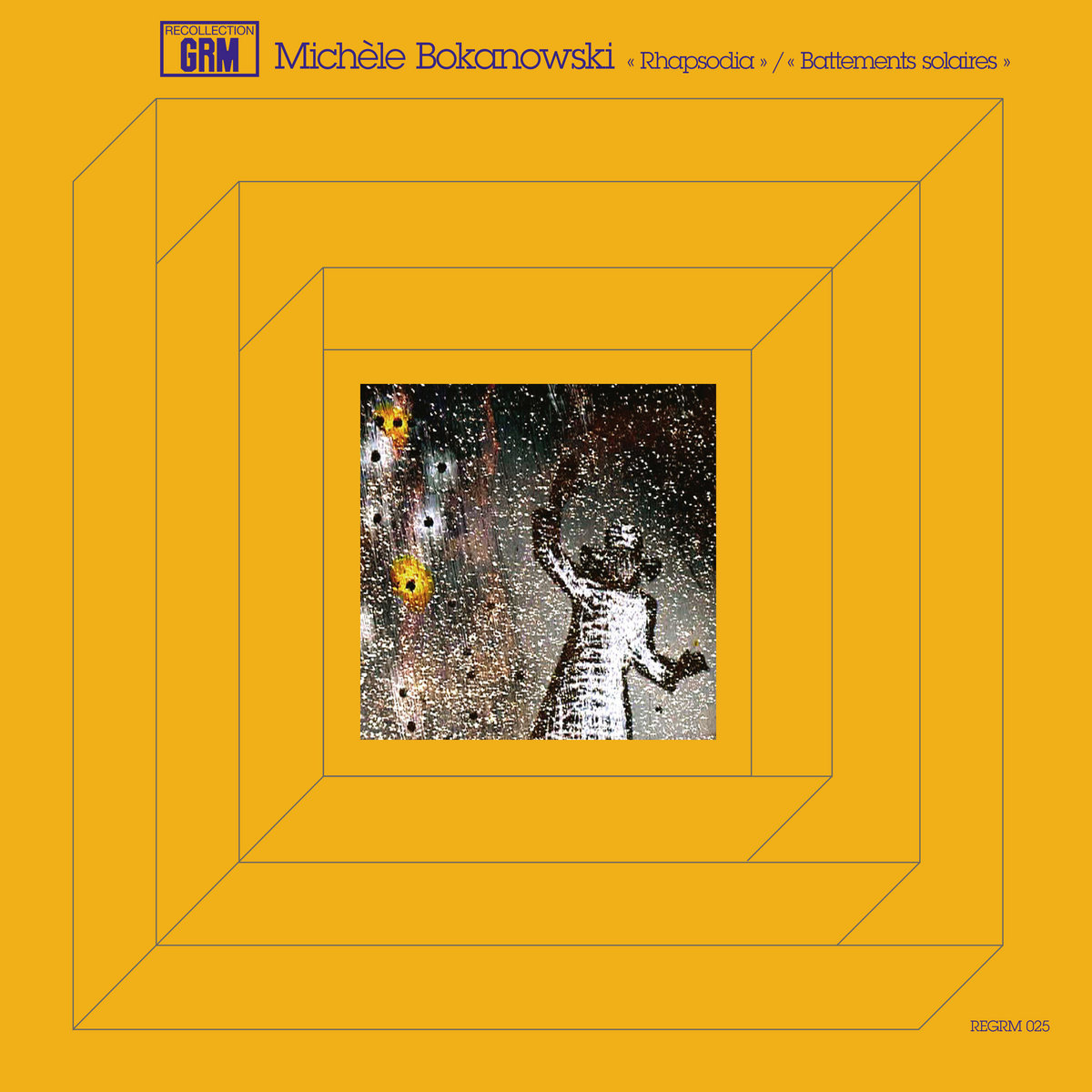 This electro-acoustic release by Michèle Bokanowki consists of two pieces. "Rhapsodia" from 2018, is a stunning work in two movements with a short interlude, dedicated to choreographer, Marceline Lartigue. "Rhapsodia" is as close to perfection as I can imagine music to ever be, with the texture, the pace, the changes, and the timing of the changes all working in an organic and unhurried way. "Battlement solaires" from a decade earlier, is the soundtrack to Patrick Bokanowski’s film of that name. Initially I felt this second piece might be best heard with visual images, but by the third hearing I utterly love it as a stand alone work, too.
This electro-acoustic release by Michèle Bokanowki consists of two pieces. "Rhapsodia" from 2018, is a stunning work in two movements with a short interlude, dedicated to choreographer, Marceline Lartigue. "Rhapsodia" is as close to perfection as I can imagine music to ever be, with the texture, the pace, the changes, and the timing of the changes all working in an organic and unhurried way. "Battlement solaires" from a decade earlier, is the soundtrack to Patrick Bokanowski’s film of that name. Initially I felt this second piece might be best heard with visual images, but by the third hearing I utterly love it as a stand alone work, too.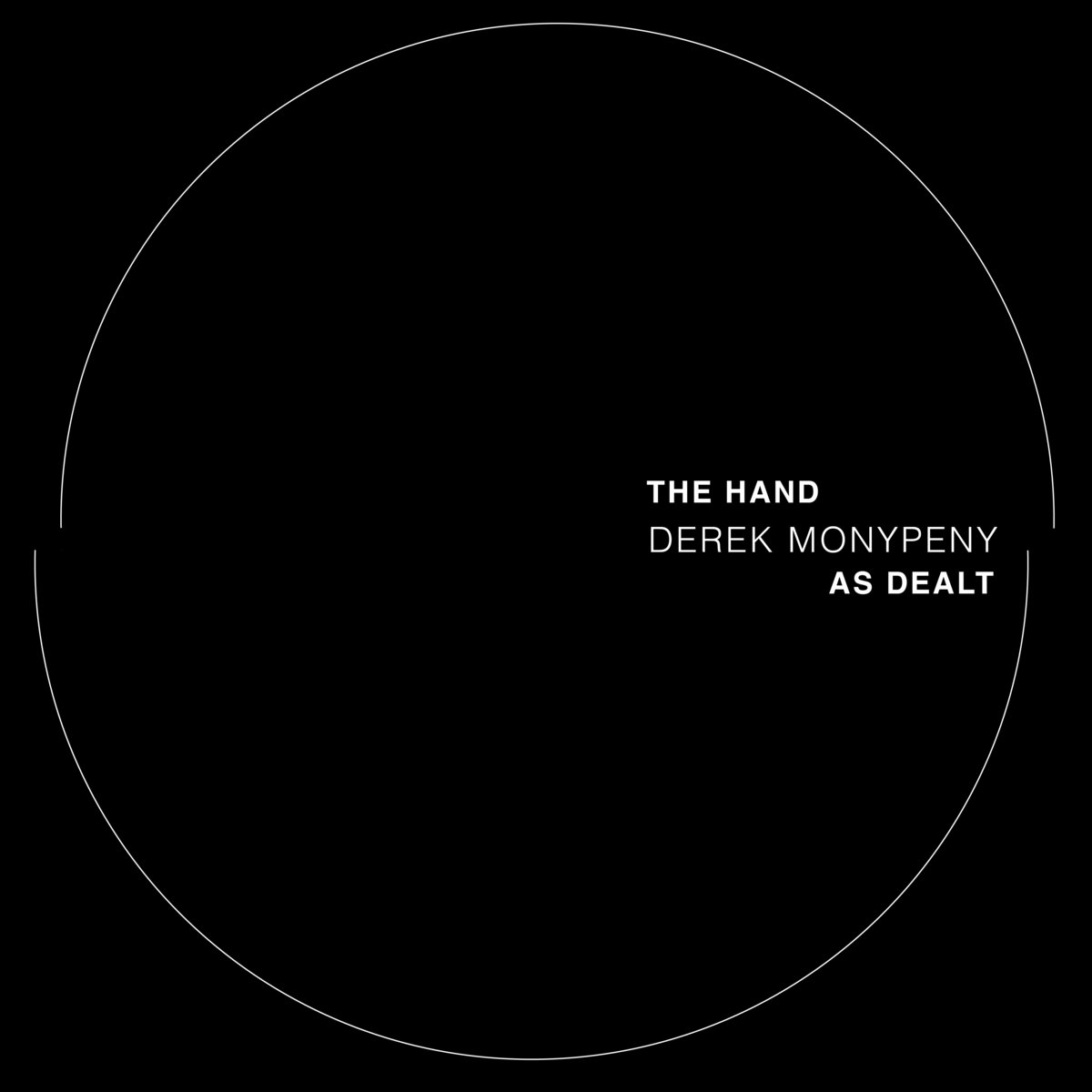 Titled after a phrase in Richard Meltzer's writings to do with an eternal sense of perseverance through sound,The Hand As Dealt is dedicated to Terry Riley, Don Cherry, Alice Coltrane, and Egyptian singer Umm Khoultoum (lesser known in the West, but the incomparable and legendary "Orient Star” and “The Fourth Pyramid” in the East). Inspired by the notion that through profound adversity there is a higher reason to play, inherent in the sound itself, Derek Monypeny plays this hand, simply and brilliantly. With his guitar tuned to DADGAD, and an indian instrument called the shahi baaja tuned somewhere in the region of D major, he also, in terms of equipment and technique, pays mind to a path trod by Riley, Reich, Oliveros, Fripp, and Eno.
Titled after a phrase in Richard Meltzer's writings to do with an eternal sense of perseverance through sound,The Hand As Dealt is dedicated to Terry Riley, Don Cherry, Alice Coltrane, and Egyptian singer Umm Khoultoum (lesser known in the West, but the incomparable and legendary "Orient Star” and “The Fourth Pyramid” in the East). Inspired by the notion that through profound adversity there is a higher reason to play, inherent in the sound itself, Derek Monypeny plays this hand, simply and brilliantly. With his guitar tuned to DADGAD, and an indian instrument called the shahi baaja tuned somewhere in the region of D major, he also, in terms of equipment and technique, pays mind to a path trod by Riley, Reich, Oliveros, Fripp, and Eno.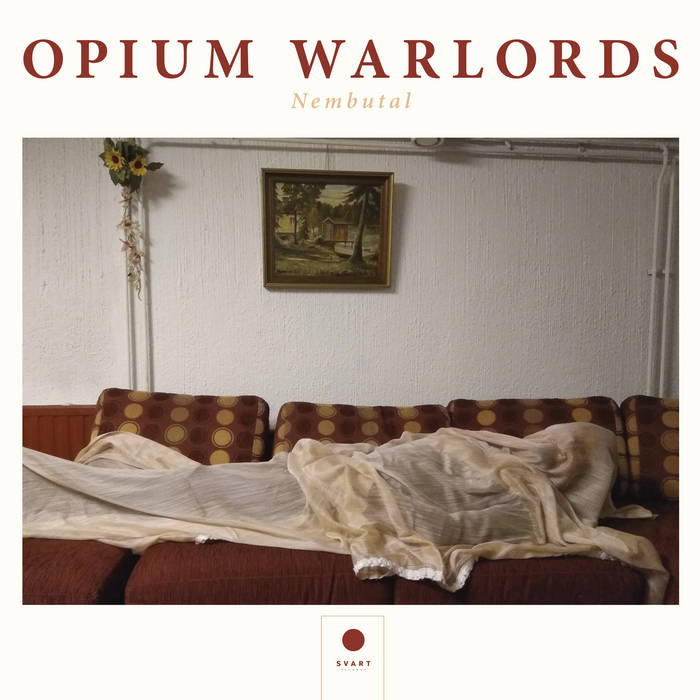 In 2010, the Opium Warlords’ MySpace page claimed they sound like "a bad Bolivian Metal band practicing a riff.” Fair enough, but at times their ponderous, doom-laden, brooding, drone-metal shows signs of being more than just another fatberg clogging the sewers of musical culture. My introduction to the group was Live At Colonia Dignidad. Nembutal is a better produced recording, with more variation in speaking, singing, and what sounds like movie dialogue samples. The pest of cliched lyrics such as on “Destroyer of Filth,” is laughable and disappointing, because at other times the words are mysterious and intriguing, sung powerfully and with room to breathe. In those moments, allied with portentous guitar work and a contemplative tempo, Nembutal is nicely out of sync with the flashy haste of modern life.
In 2010, the Opium Warlords’ MySpace page claimed they sound like "a bad Bolivian Metal band practicing a riff.” Fair enough, but at times their ponderous, doom-laden, brooding, drone-metal shows signs of being more than just another fatberg clogging the sewers of musical culture. My introduction to the group was Live At Colonia Dignidad. Nembutal is a better produced recording, with more variation in speaking, singing, and what sounds like movie dialogue samples. The pest of cliched lyrics such as on “Destroyer of Filth,” is laughable and disappointing, because at other times the words are mysterious and intriguing, sung powerfully and with room to breathe. In those moments, allied with portentous guitar work and a contemplative tempo, Nembutal is nicely out of sync with the flashy haste of modern life. Recorded live at Tokyo’s Super Deluxe club in 2017, this trio's 10th release is dedicated to Hideo Ikeezumi, founder of the incredible P.S.F. label and Modern Music store who died the same day. Mr.Ikeezumi was a fierce and relentless advocate for Japan’s underground scene and an early champion of Haino. For this concert, the three agreed their unrehearsed improvisation would be “electronic” but not which instruments any of them would play. Haino also uses a double-reed horn, the suona, traditionally used in a variety of settings and rituals including funerals, producing blaring, high-pitched sounds for both the living and the dead. I find this a bold, delicate, fascinating, and ultimately rather moving, album; albeit with a title far too long to mention in such a brief review.
Recorded live at Tokyo’s Super Deluxe club in 2017, this trio's 10th release is dedicated to Hideo Ikeezumi, founder of the incredible P.S.F. label and Modern Music store who died the same day. Mr.Ikeezumi was a fierce and relentless advocate for Japan’s underground scene and an early champion of Haino. For this concert, the three agreed their unrehearsed improvisation would be “electronic” but not which instruments any of them would play. Haino also uses a double-reed horn, the suona, traditionally used in a variety of settings and rituals including funerals, producing blaring, high-pitched sounds for both the living and the dead. I find this a bold, delicate, fascinating, and ultimately rather moving, album; albeit with a title far too long to mention in such a brief review.
